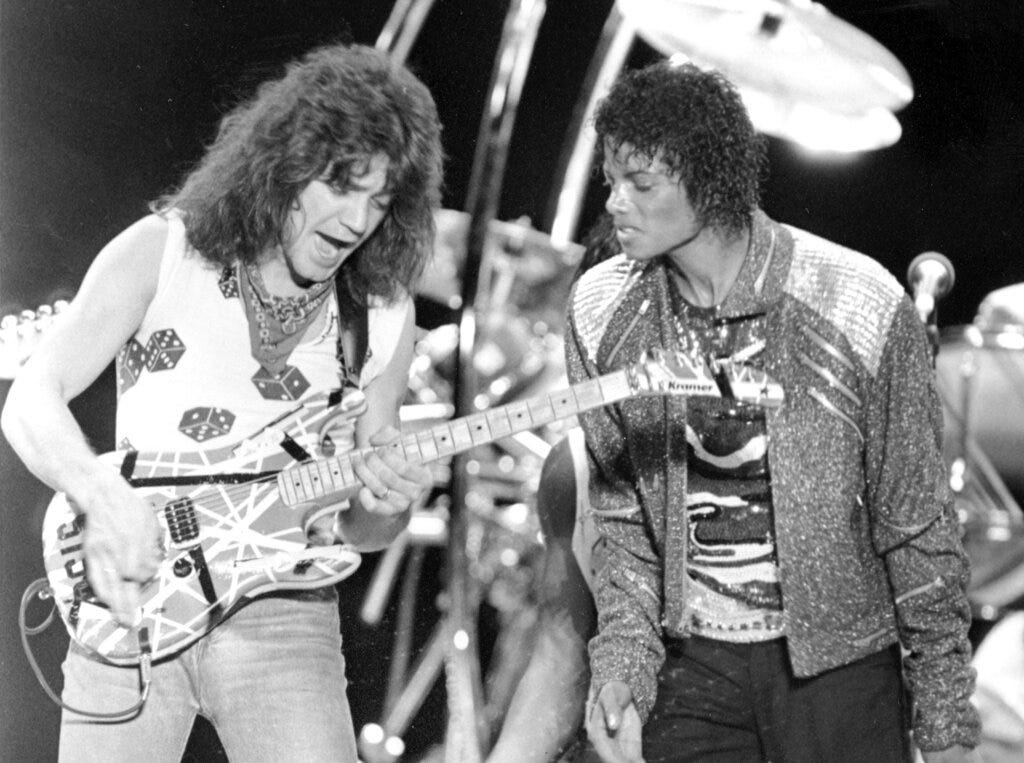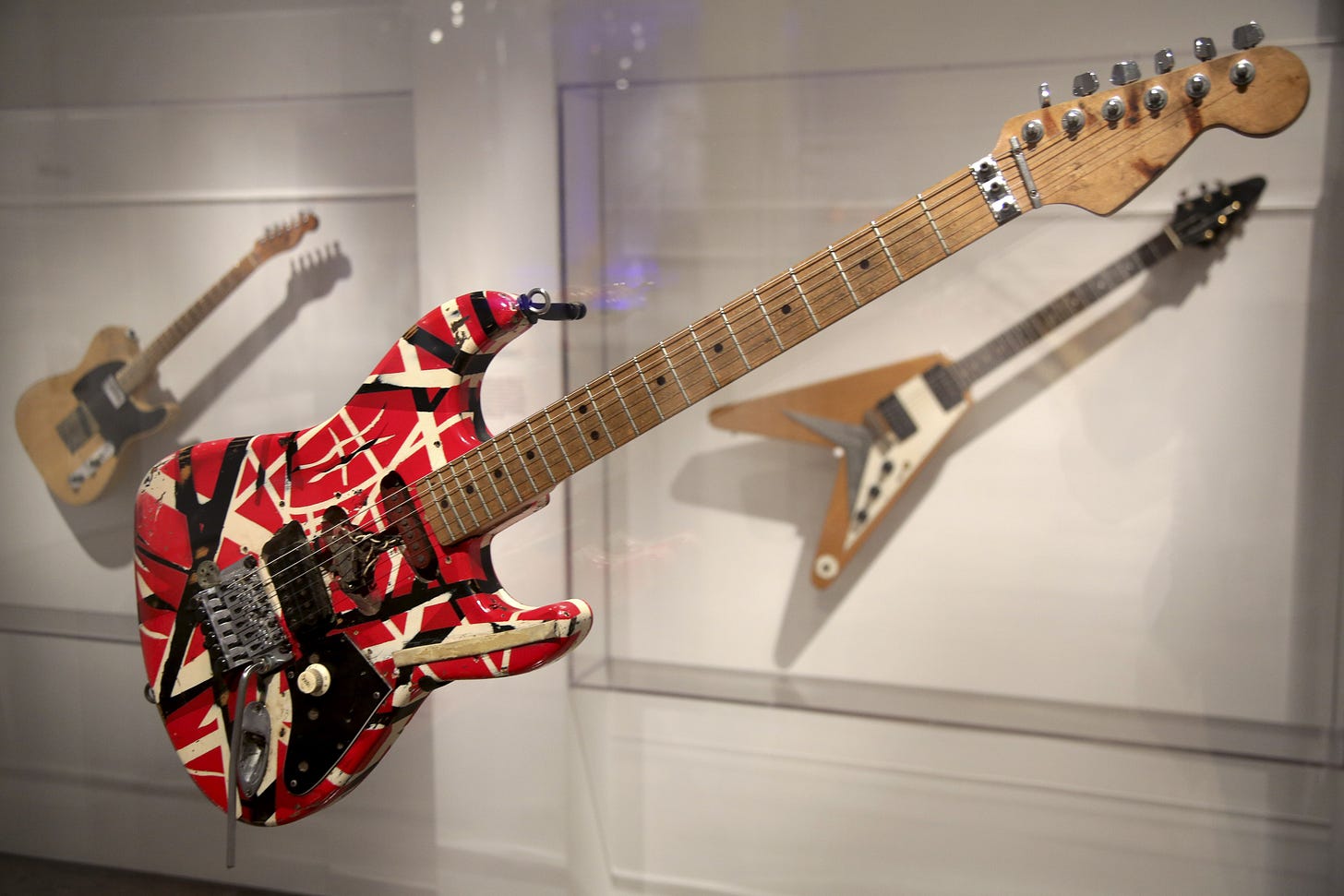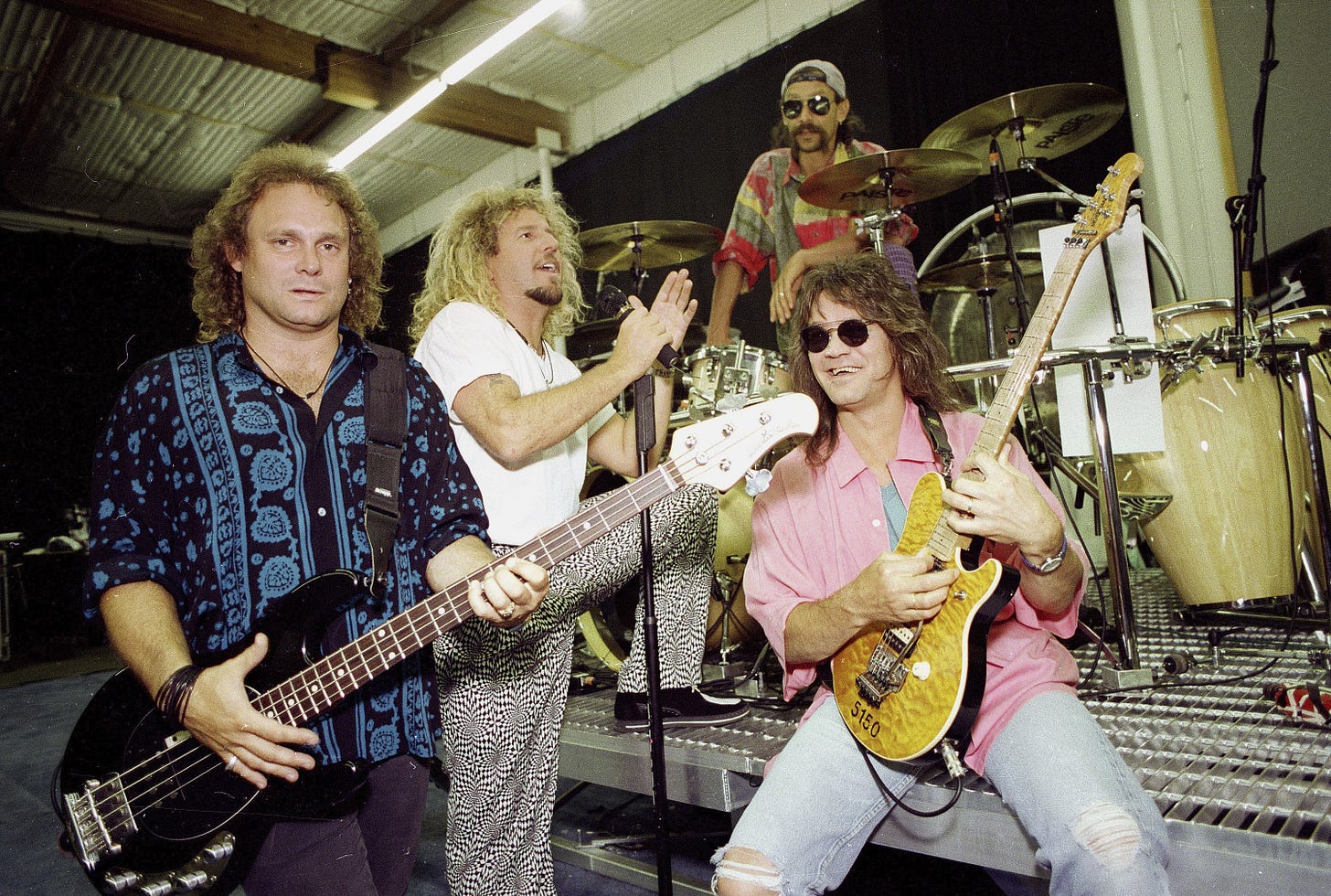Eddie Van Halen (1955 – 2020)
RIP to a guitar legend, a music icon, and an avatar of the American dream

Related highlights:
The effort to rehab disgraced former Rep. Katie Hill just got more complicated
48 years later, 'Hanoi Jane' still rooting for things that kill Americans
Kamala Harris wants to know where Trump owes money. She can just Google it
—
Eddie Van Halen, whose pyrotechnic, bombastic guitar playing set the 1980s on fire, has died.
The guitarist’s death was announced Tuesday by his son, Wolfgang.
“I can’t believe I’m having to write this,” he said, “but my father, Edward Lodewijk Van Halen, has lost his long and arduous battle with cancer this morning. He was the best father I could ever ask for. Every moment I’ve shared with him on and off stage was a gift.”
He added, “My heart is broken and I don’t think I’ll ever fully recover from this loss. I love you so much, pop.”
Thus passes a guitar legend, a music icon, and an avatar of the American dream.
Eddie Van Halen was born in 1955 in Amsterdam to Jan and Eugenia Van Halen. His brother and bandmate Alex was born two years prior. In 1962, the family immigrated to the United States, California specifically, drawn by the "land of opportunity."
"We showed up here with the equivalent of $50 and a piano," Eddie told Billboard in 2015. "We came halfway around the world without money, without a set job, no place to live and couldn't even speak the language."
Jan worked as a janitor and a musician, gigging on weekends whenever and wherever he could. Eugenia worked as a maid. The Van Halens shared a home with three other families.
Though members of the Van Halen family, including Jan and Alex, were musically gifted, it was Eddie who chased perfection with a single-mindedness bordering on obsession. It was Eddie who spent long, grueling hours as a teenager experimenting with guitars, exploring then-unknown and untested tonal possibilities. It was Eddie’s pursuit of the perfect-playing and perfect-sounding guitar that led him to stitch together Gibson and Fender parts to create a battered, homemade ax, which he lovingly dubbed “Frankenstein.”

The band Van Halen formed in Pasadena, California, in 1972, with Eddie on guitar, Alex on drums, David Lee Roth on vocals, and Michael Anthony on bass. In 1978, they grabbed the U.S. by the lapels and shook it hard when they released their self-titled debut album, Van Halen, which opens with the one-two punch of "Eruption," Eddie’s mind-melting note of introduction, and "You Really Got Me," the band’s swaggering and unapologetically aggressive cover of the Kinks oldie.
There is more gold on Van Halen, but "Eruption" is the thing that really sticks out among the tracks. It seems difficult to believe today because the 1980s are defined by shredding, two-handed tapped, dive-bombing guitar solos, but there was really nothing quite like Eddie Van Halen until there was Eddie Van Halen. His playing style was so unique, so awe-inspiring and virtuosic, that David Lee Roth once suggested he play with his back to the crowd to prevent onlookers from stealing his style. "Eruption," with its blistering riffs and splitting licks, is Eddie saying, “I’m here,” without speaking a word. Audiences were more than happy to make his acquaintance.
After the success of Van Halen, the band got to work, producing album after album at a breakneck pace.
They released Van Halen II in 1979; Women and Children First in 1980; Fair Warning in 1981; and Diver Down in 1982.
Also in 1982, Eddie made an appearance on Michael Jackson’s mega-hit album, Thriller, playing the guitar solo in "Beat It." During the recording of the solo, which Eddie did in two takes and free of charge “as a favor,” a speaker in the studio control room literally caught on fire, in case you needed further evidence of the man’s abilities with the electric guitar.
Then came 1984, the high-water mark in the band's decades-spanning career. Van Halen achieved super-stardom with the album 1984. It shot straight to the second spot on the U.S. Billboard 200 with its No. 1 hit "Jump," which spent 21 weeks on the charts. 1984 is loud, campy, full of synths, cheeky, slickly produced, and completely joyful. In other words, it's the 1980s. You can practically smell the hairspray coming off the album.

Van Halen’s good fortune continued late into the 1980s, even long after David Lee Roth was replaced as frontman by Sammy Hagar. It was not until the mid-1990s that things slowed and then eventually came to a stop for the group.
But by then, Eddie had already cemented his place in music history. By the time Van Halen slowed to halt, Eddie was a bona fide American legend, having spawned 1,000 copycat musicians and dozens of loving tributes in popular culture, from Bill and Ted’s Excellent Adventure to Better Off Dead. Through all the line-up changes, intra-band squabbles, bruised egos, intrigue, and a 14-year gap between 1998’s flopped Van Halen III and 2012's slightly better-received A Different Kind of Truth, the one constant was Eddie's mastery of his craft and its lasting influence on the music industry. No amount of infighting and drama changed that.
Eddie Van Halen, who spoke no English when he immigrated to the U.S. at the age of 7, is an American icon and a testament to the promise of the American dream. His determination to be the best, to explore and conquer uncharted territories with his instrument of choice, made him a beloved hero and a legend, his artistry transcending whatever barriers he may have faced coming to America. He shaped the sound of an entire decade, encouraging generations of listeners also to seek greatness.
Eddie Van Halen the guitarist may be gone, but his "brown sound" and the legions of acolytes he inspired, this author being one, live on.



